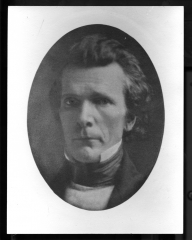ments.” The vote of the Education Society Board on August 19th was judged illegal, apparently on the ground that the theological professors already had tenure as established by the University Board on June 9, 1847. Henceforth, the theological professors were to be considered as being on regular appointment. The brethren who had originally refused to back Maginnis were reported to have broken down completely and “repented of their folly.” The broader vision of their non resident associates, such as Friend Humphrey, Ira Harris, and John N. Wilder prevailed.
When the citizens of Hamilton learned that Professor Maginnis might resign because of the unpleasantness, over 120 signed a public letter urging him to continue his connection. They commented upon the luster his teaching ability gave to the institution and the loss the community would sustain. His appreciative reply, dated November 9, 1847, and published in the local paper, is especially interesting in view of the fact that some weeks earlier, he had already participated in the initial steps for removing the University to Rochester. He wrote that the occasion for the resignation no longer existed, and that he was sincerely attached to the institution and the village whose citizens, with few exceptions, had always shown him and his colleagues “those marks of respect and kindness which are always indicative of a refined and cultivated people.”
The Maginnis case was a natural outgrowth of the somewhat strained relations between the faculty and the village Baptist Church. The church itself was in an unhealthy condition as is shown by the short tenure of its pastors in the 1840’s. One, resigning in 1842, assailed the congregation for harboring “mischief makers” while both of his successors left amid bitter feelings. There was a conservative element among members whose “old puritanical notions” led them to oppose many of the liberal tendencies held by the faculty. They were the ones who had sided with Jacob Knapp and they must have rankled in 1845 when the professors and a few others withdrew to form the Seminary Church on the Hill. Perhaps they also frowned upon the cordiality which existed between the faculty, especially Professor Maginnis, and St. Thomas Church, organized by the Episcopalians in 1835. Another point of irritation was their criticism of faculty social life, about which unfriendly rumors reached even the northern part of the State. An informant in that region wrote Dr. Kendrick of difficulty in raising





